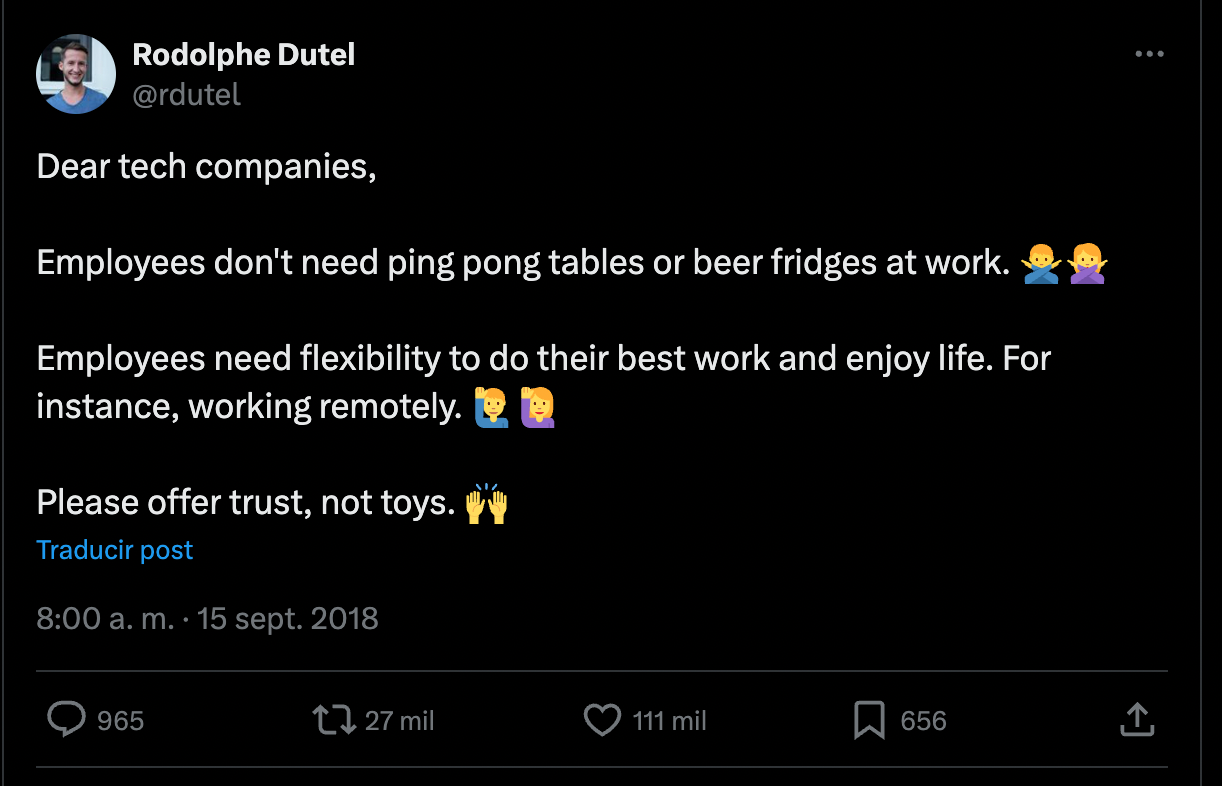In the last decade, remote work has grown exponentially, and as more companies adopt flexible work setups, it’s become clear that managing remote workers requires a shift in mindset.
For nearly ten years, I’ve run Remotive, a company dedicated to helping remote workers connect with remote companies.
Before that, I worked at Buffer, a remote-first company that hired remote workers across 12 different time zones. I was the Director of Operations and briefly the Director of Finance. It was within my scope to help hire, engage, and retain remote talent, as well as, at times, let them go.
Through these experiences, I’ve learned that the key to successful remote work management lies in one word: trust.
Trust: The Foundation of Remote Work
The foundation of effective remote work is trust. Remote workers need to be trusted to perform their tasks and deliver results, regardless of whether they are being supervised in person.
A shift from traditional management styles—where hours logged are measured—to an output-based approach is crucial. In this model, the focus is on the scope and quality of the work completed, not the number of hours worked.
By embracing this approach, you allow remote employees to work with flexibility, minimize friction, and reduce the pressure of being present at all times. In doing so, you create an environment where employees can thrive and produce their best work.
The Challenges of Hybrid Work
While fully remote setups provide an equal playing field for all employees, hybrid work environments (where some employees are in the office and others work remotely) present unique challenges.
Remote workers often find themselves with less access to leadership and fewer opportunities for visibility, and, as a result, are sometimes overlooked for promotions.
In hybrid setups, the people in the office may have more face time with upper management, which can lead to a perception that they are more engaged or valuable. This creates a divide where remote workers may feel like second-class citizens within their own company.
To overcome these challenges, equal treatment is essential. Leadership and top management should also work remotely to ensure that everyone shares the same experience.
When everyone, including management, works remotely, it promotes fairness and inclusivity. Without this, remote workers risk being sidelined, which can lead to disengagement and turnover.
Documentation and Asynchronous Communication
Remote teams require a different approach to communication. In an office, it's easy to walk over to a colleague's desk and ask a quick question. However, in a remote setup, these spontaneous interactions are more difficult.
That’s why documentation becomes critical. By documenting processes, decisions, and communications, remote workers can easily refer back to important information.
Asynchronous communication is another key factor in making remote work successful. Tools like Slack should not be treated as platforms that require immediate responses. Instead, they should function more like an answering machine, where workers can leave messages and colleagues can respond when available. This flexibility prevents unnecessary pressure and respects remote team members' different time zones and schedules.
Avoiding Burnout in Remote Teams
One of the most common problems among remote workers is burnout. Many remote employees feel the need to be constantly available to prove their worth. This constant availability can lead to exhaustion and burnout.
It’s important for managers to encourage healthy work boundaries and to emphasize that success is measured by output, not by the number of hours logged online.
The Role of People Management in Remote Work
During the COVID era, many managers worried their roles would become redundant in a remote-first world. However, people management is more important than ever for remote teams. Managers play a critical role in checking in on employees, ensuring they are engaged, and understanding their career goals.
Without regular in-person interactions, it’s easy for remote workers to feel disconnected. Regular check-ins, career development conversations, and offering support through tools like employee surveys or wellness programs help maintain engagement and keep remote workers feeling connected to the company's larger goals.
Leveraging Technology to Support Remote Teams
When managing remote workers, technology plays an important role in facilitating communication and collaboration.
Tools like TextExpander can help remote teams avoid repetitive tasks by using pre-recorded snippets of text. Additionally, Loom allows teams to leave asynchronous video messages, which is particularly helpful for teams spread across multiple time zones.
These tools, combined with solid documentation, help reduce friction and improve efficiency. They enable remote teams to communicate more clearly and ensure that everyone is aligned, even when working asynchronously.
The Importance of In-Person Meetups
While remote work offers many advantages, one thing that’s difficult to replicate is the human connection you get from face-to-face interactions. For this reason, even fully remote teams should consider scheduling occasional in-person meetups.
These gatherings help strengthen relationships and foster deeper connections between team members, which can positively impact collaboration and company culture.
Trust Over Toys
At the core of successful remote work is trust. When companies trust their employees and create environments that support flexible, output-based work, remote teams can thrive.
It’s not about offering fancy perks or distractions; it’s about building trust, fostering engagement, and using the right tools to support the team’s success.
Ultimately, remote work is about empowering people to do their best work, wherever they are, and ensuring that they feel connected and valued along the way.

